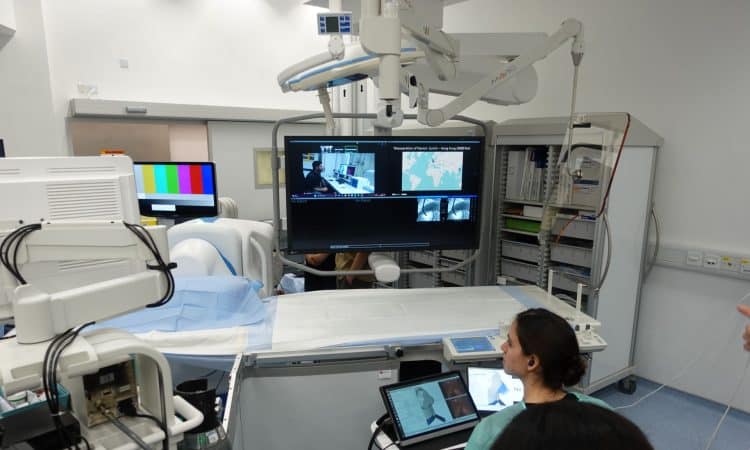
Recently, a pig was operated on in Hong Kong during an endoscopy with a novel touch: the person operating the endoscope was 9,300 kilometers away, in a laboratory in Zurich, Switzerland.
This collaborative project between researchers from ETH Zurich and the Chinese University of Hong Kong allowed scientists to examine the anesthetized animal’s stomach from half a world away, thanks to ultra-fast internet connection and advanced robotic technology.
Using the joysticks of a PlayStation controller, PhD student Alexandre Mesot was able to maneuver the endoscope in Hong Kong while watching the images on a screen in the laboratory in Zurich, just 300 milliseconds late.
A pig was operated on over the internet from over 9,000 km away
The fact that this via the Internet represents achievement represents an impressive advance in the field of surgical telerobotics. The COVID-19 pandemic has highlighted how much can be achieved through telemedicine, but you might assume that for a surgical procedure it is essential that the surgeon be present. However, the first transatlantic operation took place as early as 2001, and since then there have been constant attempts to push the limits of what can be achieved when the surgeon and the patient are not in the same room.
Recent advances have allowed scientists on Earth to even operate a surgical robot aboard the International Space Station (ISS), but while this was an impressive feat, the ISS was only 400 kilometers from the laboratory, in orbit. Operating a well over 9,000 kilometers away required careful planning and rigorous testing, not to mention the need for a very stable connection. During an endoscopy, there is absolutely no time to have problems with the Internet, .
In the operating room in Hong Kong, the pig was anesthetized by surgeons, who inserted the endoscope safely through the mouth and . And it wasn’t just any endoscope, this one was specially developed by the team at ETH Zurich to be navigated through a magnetic field.
“Not only can the endoscope be bent in any direction thanks to its magnetic head; it is also smaller and easier to handle than conventional devices”, .
A huge advance for non-invasive procedures
It is so flexible that after taking control of the endoscope from Switzerland, Mesot was able to manipulate it so that it bends the head back 180°, providing a view of the entrance to the stomach. A small forceps allowed Mesot to take tissue samples from the stomach wall.
Because the endoscope is smaller than the usual but still very maneuverable, it could potentially be used on human patients through the nose instead of the mouth. This is much more comfortable for patients and means they can receive lighter sedation while being more .
“In the next stage of the research, we hope to perform teleoperated endoscopy on a human stomach. This technology has great potential. I’m thinking here of minimally invasive procedures in the gastrointestinal tract, such as cancer screening,” said Professor Bradley Nelson of the Multi-Scale Robotics Laboratory at ETH Zurich.
The pig (as far as is known) survived the procedure unscathed and probably unaware of how significant that day was for mankind.
The study was published in the journal

